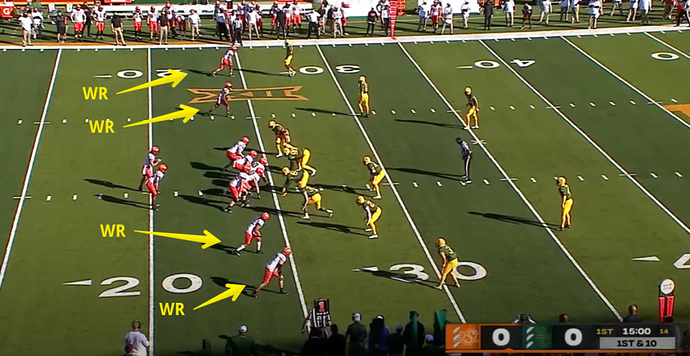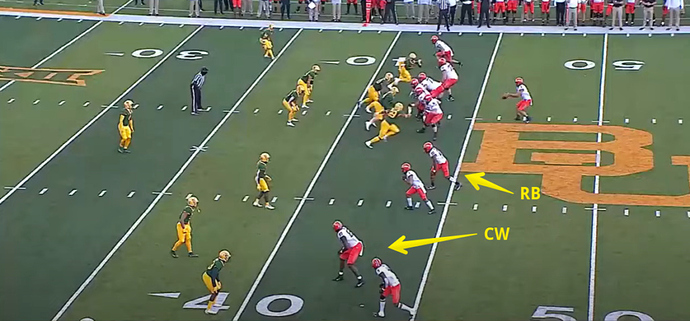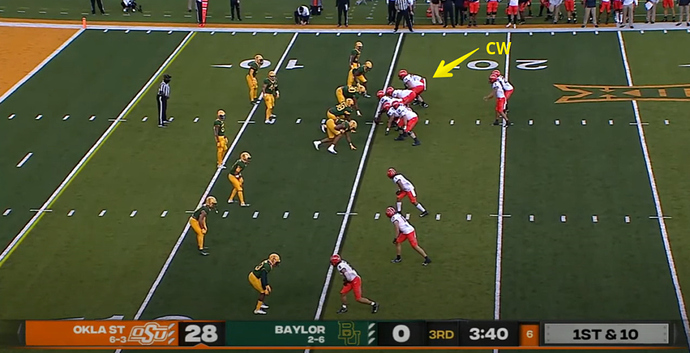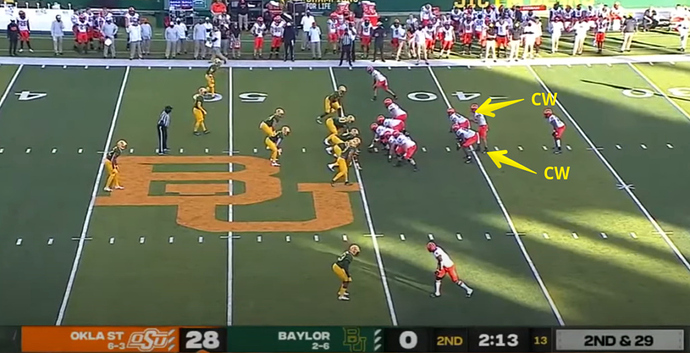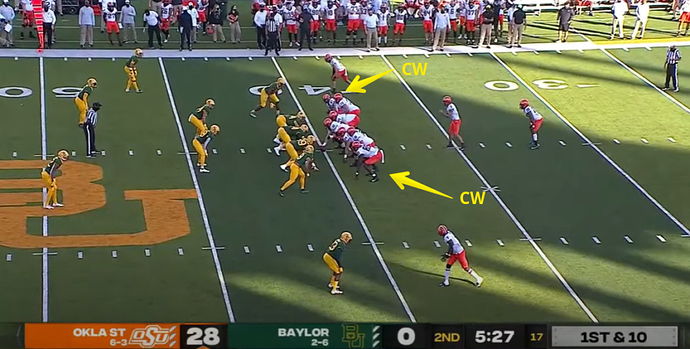By Dustin Ragusa
Oklahoma State finished its regular season with a 42-3 victory over the Baylor Bears in Waco this past Saturday.
BU was without 47 players, coaches, staff members and other personnel, and though it looked like the Bears still had a majority of their starters from the game prior against OU, their depth definitely took a hit. With that said, the Cowboys came out and executed their game plan on both sides of the ball, resulting in their seventh win of the year.
The Cowboy defense dominated from start to finish, holding the Baylor offense to just 3 points while tallying 13 tackles for loss and four sacks. It was a nice end to an overall impressive regular season from defensive coordinator Jim Knowles’ squad.
On the other side of the ball, the Cowboys got a breakout performance from freshman running back Dominic Richardson, who went for 169 yards on 23 carries (7.3 yards per carry) and scored three times. Dezmon Jackson and Micah Cooper added another 62 yards on 14 carries (4.4 yards per carry) to put the OSU running backs over 200 yards on the day. Through the air, quarterback Spencer Sanders had an impressive outing going 20-for-30 (66.7%) for 347 yards and two touchdowns, though he did have two inceptions to go along with an otherwise superb stat line.
Now, for this week’s three-part film study, I’ll take a look at what offensive coordinator Kasey Dunn and company did to put 42 points on the board against the BU defense. Let’s start by taking a look at the overall scheme.
Overall Scheme
After going with a heavy dose of 11 and 12 personnel for a majority of the season, Dunn came out on the first series of the game and ran the first two plays out of a 10 personnel look with no Cowboy backs on the field. An example of this formation is shown in the image below.
We have seen 10 personnel this season, but I don’t remember the Pokes starting off a game with it.
Below is the breakout of the personnel groupings used against the Bears:
- 10 personnel: 5%
- 11 personnel: 53%
- 12 personnel: 30%
- 13 personnel: 12%
Based on my notes from past games, I believe this is the highest percentage of non-11 and 12 personnel formations OSU has utilized since its faced Texas. In addition, this is the lowest percentage, though not by a wide margin, of 12 personnel groupings Dunn has used recently. However, I wouldn’t put the offensive production solely on the reduced number of two Cowboy back formations, but more on the way Dunn mixed in the different looks and kept the defense on its toes with a nice flow to the play calling.
A majority of the formations used against BU we had seen before from the Pokes, or at least something very similar, but overall this game flowed much more smoothly schematically than some of the Cowboys’ recent matchups. Out of 11 personnel, we saw the Quads look, or four receivers to one side of the formation, as you’ll see below.
This formation can put stress on the defense in a number of different ways. It forces the Bears to adjust and put more defenders on that side of the field than they normally would, which can allow the QB to more easily recognize coverage. In addition, as you can see at the top of the screen, this formation allows wideout Dillon Stoner to have single coverage with no real safety help over the top.
The Cowboys also went with a lot of 11 personnel formations with the Cowboy back on the line of scrimmage, including “nub” Cowboy back/tight end sets.
The “nub” side is the side of the field with a single tight end and no wide receivers. As Cody Alexander explains on MatchQuarters.com, this forces the defense to “acknowledge a true ‘run’ side, while also defending multiple receiver formations. Offenses that utilize TE sets can create leverage issues or force a secondary player to be left by his lonesome against a bigger player.”
The bulk of the 11-personnel formations had the Cowboy back either on the line of scrimmage, as shown above, or at the H-back spot. However, we did see a few looks with the Cowboy back in the backfield.
In 12 personnel, we saw the Diamond formation on occasion.
Along with a variation of the Diamond where the Cowboy backs end up stacked in front of each other after pre-snap motion, as you’ll see in the following clip.
Lastly, the other formation Dunn went to heavily out of 12 personnel was the one shown below with a Cowboy back on each side of the line of scrimmage.
Other than the sets shown above, the Pokes had a few 12-personnel plays with one, or both, Cowboy backs split wide, as we’ve seen them do at times this year. There was also the Jelani Woods sneak which was run out of a 12 personnel look.
Out of 13 personnel, the Cowboys went with the I-formation set they’ve shown this year.
And, a Diamond formation look with an extra Cowboy back on the line of scrimmage.
In terms of play calling, the Pokes had 47 rushing attempts and threw the ball 30 times. As I mentioned above, the way Dunn called this game kept the Baylor defense guessing. For example, there was a stretch in the first half where the Cowboys ran six plays of 11 personnel, went with 12 personnel for the next six, went back to 11 personnel for nine plays and then mixed in 10 and 13 personnel. Dunn was able to still move with tempo, but also switch out his personnel groupings and score six TDs on the day.
In the next post, I’ll dive in a little deeper into the OSU rushing attack against BU.
